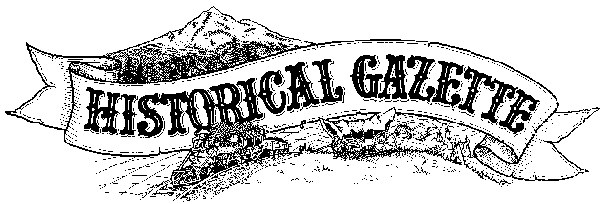Chief Joseph Surrenders to Col. Miles
Volume Two Number Eight
Oregon Trail 1877
Who Owns Wallowa Valley?
--an excerpt--"I have no other land than this. I will not give it up to any man. My people would have no home," said Old Chief Joseph at a council in 1855. He left the council believing the Wallowa would continue to be home.
At the 1863 treaty council, Joseph's band was not represented. Chief Lawyer, so-called because of being "a great talker," sold most of the Nez Perce country. "Lawyer acted without authority from our band. He had no right to sell the Wallowa (winding water) country. That had always belonged to my father's people. No other Indians ever claimed Wallowa," said the son of the old chief, also called Joseph.
Joseph promised his father as he lay dying that he would never sell the country of his father and mother. Now young Joseph would lead his people as his father had done.
"The United States claim they had bought all the Nez Perces' country outside of Lapwai Reservation, from Lawyer and other chiefs," Joseph said. "The old treaty has never been correctly reported. If we ever owned the land we own it still, for we never sold it."
Settlers began to move into the Wallowa, some of them lived in peace with the Nez Perce. Troubles came when more settlers, not all of them honest, arrived. Grievances developed and created "bad blood" against the settlers.
"They stole a great many horses from us, and we could not get them back because we were Indians. The white men told lies for each other. They drove off a great many of our cattle. Some white men branded our young cattle so they could claim them," Chief Joseph said.
Indian Agent Monteith became increasingly insistent that the Wallowa band move to Lapwai. Visits to Joseph asking them to move on to the reservation proved fruitless and the agent determined to bring the Army to enforce the disputed Treaty of 1863.
Gen. O.O. Howard, District of the Columbia, called a grand council to meet at the Lapwai reservation in mid-May to show the force of the military which the Indians would have to deal with if they continued to refuse to move onto the reservation with the Nez Perce who had signed the treaty and moved voluntarily 14 years ago.
A tour of the lands on the reservation made it appear to Joseph and his chiefs that there was not enough room for them and their stock. Gen. Howard's report indicated there were a few white people who had moved onto the land that would have been evicted to accommodate the new arrivals.
Chief Joseph asked again to remain in the Wallowa Valley. Gen. Howard stood firm, they would move onto the reservation.
Official reports of this council indicate that Chief Joseph should have been given until autumn to move his band on to the reservation. Other tribes being moved that summer were also given until autumn to report to their reservation. ~Bridget E. Smith, Historical Gazette
The conclusion of the story is in our printed edition. Included are three pieces of original art by Portland artist and owner of Artistic Signs, Rick Fell. We discovered Fell in 1991 when we commissioned him to draw our masthead banner which graces the top of every one of our newspapers and is found here on our web site as a graphic. His creation exceeded my expectation. Many people have imitated it and occasionally people have even lifted it to be their own, but it is an original piece of art which we are proud to own and feel fortuation to have found Rick Fell at the perfect time.
Continue the Oregon Trail saga! Read our Number Nine of the series, Oregon Trail 1880 Columbia River: Trail to Trade

Bridget E. Smith, editor & publisher
Email | Home Page | Historic Headlines
Historical Gazette
Published in Portland, Oregon
© 1991-


